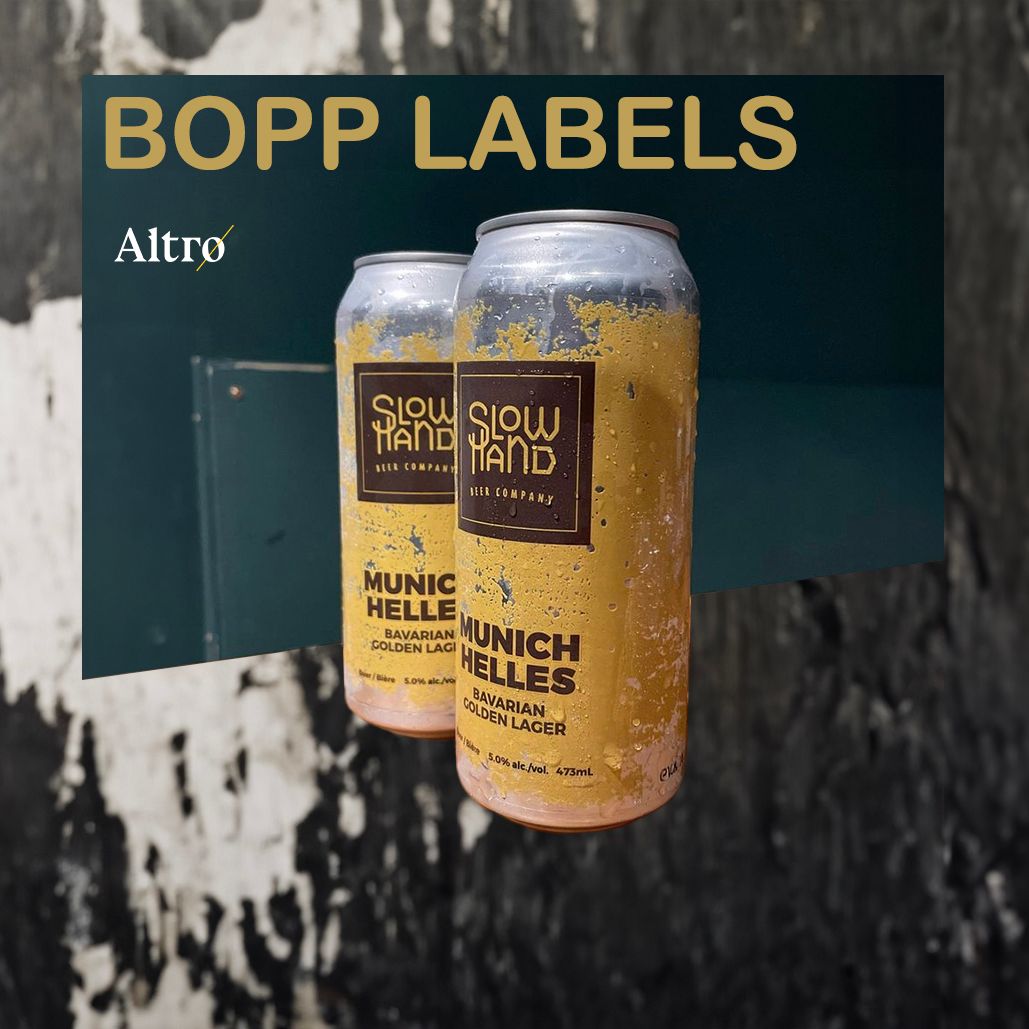How to Make Custom Beer Labels: What is BOPP?

When it comes to beer, first impressions matter. Custom beer labels offer breweries an opportunity to showcase their brand identity, catch consumers' attention, and differentiate themselves in a crowded market. One material that has gained popularity in the beer labeling industry is BOPP (Biaxially Oriented Polypropylene). In this blog post, we will explore the world of custom beer labels and delve into the characteristics, benefits, and process of using BOPP for creating eye-catching and durable labels that enhance the overall appeal of your brew.
Understanding BOPP
Biaxially Oriented Polypropylene (BOPP) is a versatile and widely used plastic film in the beer labeling industry. It is made from polypropylene, a thermoplastic polymer known for its excellent clarity, durability, and moisture resistance. BOPP films are produced through a specialized manufacturing process called biaxial orientation, where the film is stretched both longitudinally and transversely, resulting in improved mechanical properties.
The clarity of BOPP film allows for high-quality, vibrant printing, making it an ideal choice for custom beer labels. Breweries can showcase intricate designs, bold colors, and eye-catching graphics with exceptional detail and sharpness. The smooth surface of BOPP also enhances the appearance of the labels, giving them a professional and polished look.

Advantages of BOPP Labels
BOPP labels offer numerous advantages that make them a popular choice for various labeling applications. Firstly, BOPP labels provide excellent moisture resistance, ensuring that they remain intact and legible even in cold or humid environments. This resistance prevents ink smudging or label warping, maintaining the label's visual appeal and readability. Additionally, BOPP labels are highly durable, protecting against abrasion, wear and tear.
Creating Custom Beer Labels with BOPP
Creating custom beer labels with BOPP involves a straightforward process that ensures high-quality and visually appealing results. Some of the steps are:
a) Artwork design: Begin by designing your label artwork using graphic design software or hiring a professional designer. Ensure that the design aligns with your brand's identity and captures the essence of your beer.
b) Printing: Once the artwork is finalized, it's time to print it onto the BOPP film. This can be done using digital printing or flexographic printing techniques. Digital printing allows for quick turnaround times, cost-effective small print runs, and the ability to print multiple SKU variations simultaneously, eliminating the need for later tooling adjustments in case of design or content changes. On the other hand, flexographic printing is suitable for larger quantities and provides excellent color vibrancy.
c) Die-cutting: After printing, the labels are die-cut into the desired shape. BOPP's flexibility allows for intricate and precise cuts, enabling unique label shapes that stand out on store shelves.
d) Adhesion: Finally, the BOPP labels are applied to the beer bottles or cans. This can be done manually or with the help of label applicator machines, depending on the scale of production. Ensure that the labels are properly aligned and securely attached to prevent peeling or wrinkling.
Tips for Designing Effective Beer Labels
When designing custom beer labels, consider the following tips to make them visually appealing and impactful:
a) Brand consistency: Maintain consistency with your brand's visual elements, such as logo, color scheme, and typography. This helps consumers recognize and remember your beer.
b) Legibility: Ensure that all important information, including beer name, style, ABV (alcohol by volume), and brewery details, is easy to read, even at a distance or in low lighting conditions.
c) Storytelling: Use the label design to tell a compelling story about your beer, whether it's the brewing process, unique ingredients, or the history behind your brewery. Engaging narratives can captivate consumers and create a memorable experience.

d) Eye-catching visuals: Incorporate visually appealing graphics, illustrations, or photographs that reflect the beer's personality and style. Use colors that evoke the desired emotions and stand out on store shelves.
e) Clear hierarchy: Organize the label information in a logical and visually pleasing manner. Prioritize essential details and ensure that they are easily distinguishable from secondary information.
f) Label dimensions: Consider the size and shape of your beer bottles or cans when designing the labels. Optimize the label dimensions to fit seamlessly and enhance the overall aesthetics of the packaging.
g) Regulatory compliance: Familiarize yourself with local regulations regarding beer labeling. Ensure that all necessary legal requirements, such as government warnings and alcohol content, are included on the label.
Conclusion
Incorporating BOPP labels in your beer packaging not only ensures a visually appealing product but also provides durability and moisture resistance, safeguarding the label's integrity in various conditions. By following the steps outlined in this blog post, breweries can create custom beer labels that accurately represent their brand and catch consumers' attention.
Interested in BOPP labels for your next beer project?
We're always looking to help breweries of all sizes maximize their impact with labels that solve all your problems - quality control, cost, and turnaround time.
Trusted by some of the most awarded breweries in Canada, we'd be glad to talk with you about your custom beer bottle or cans project.
Click here to get in touch today and we'll get back to you shortly.
